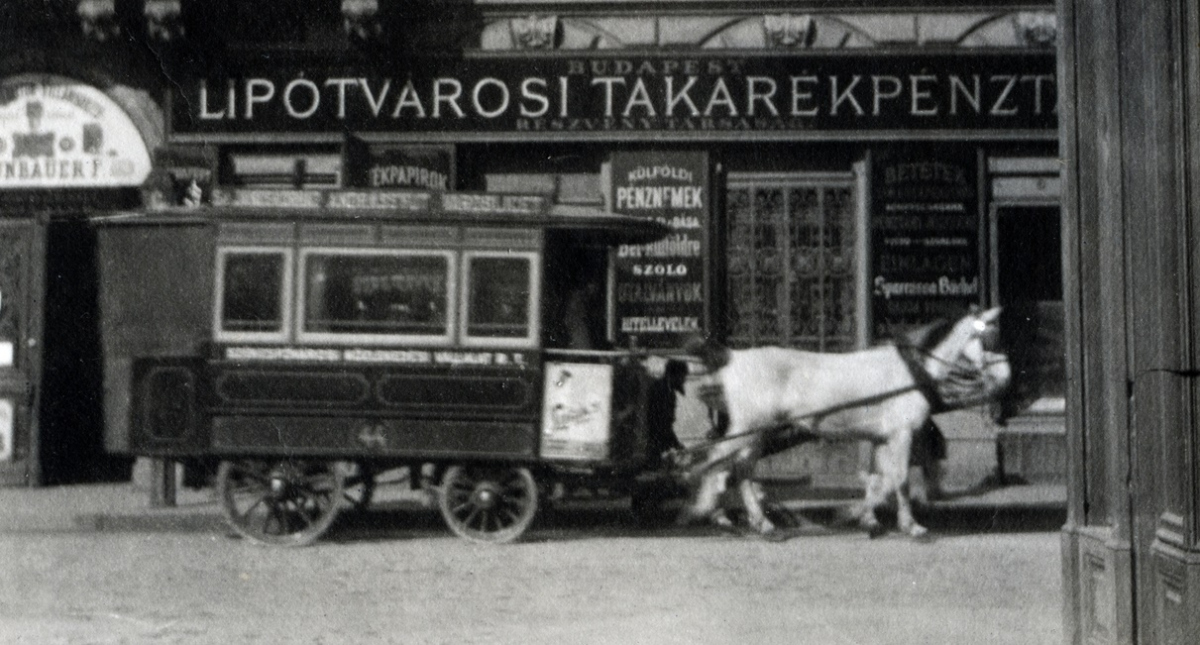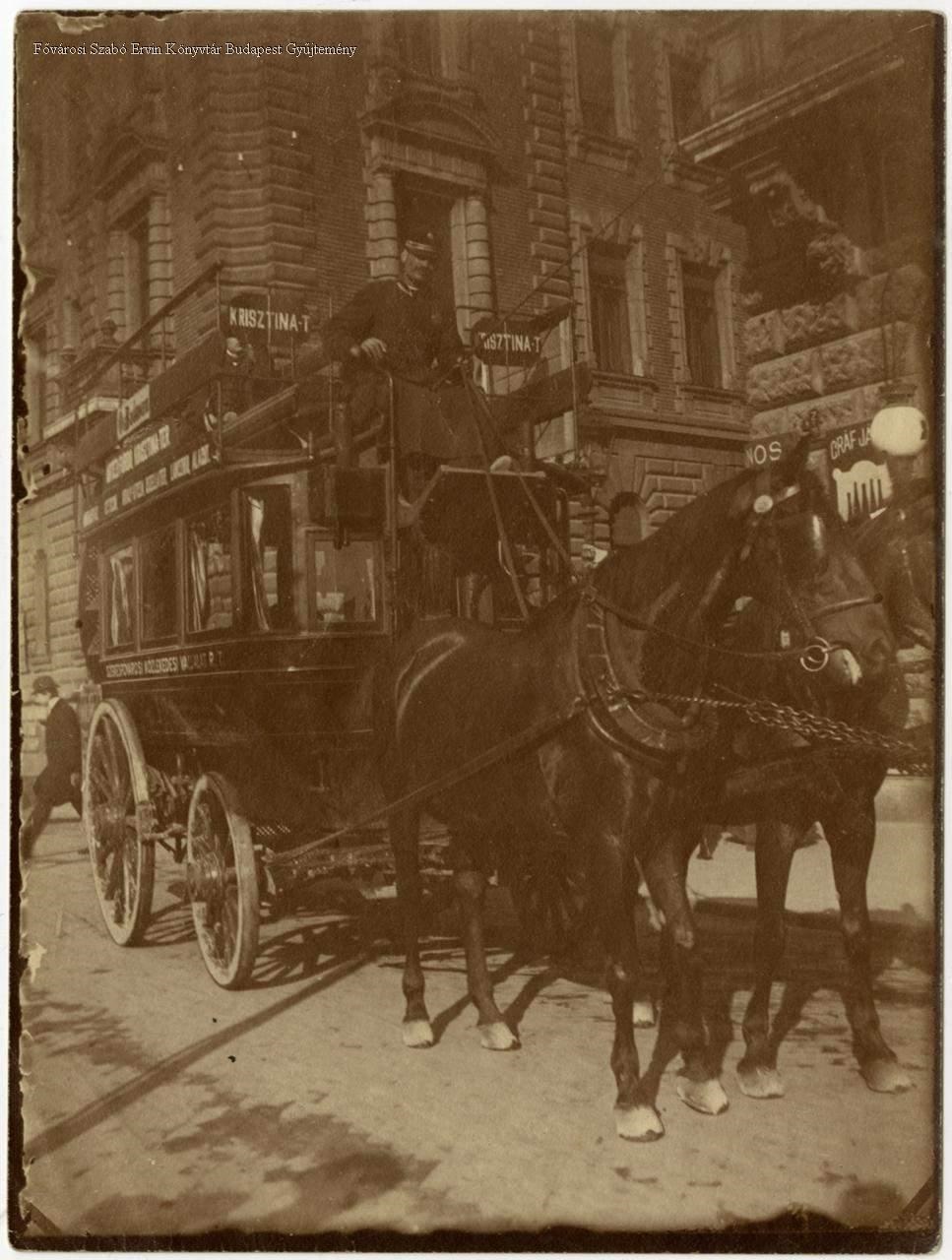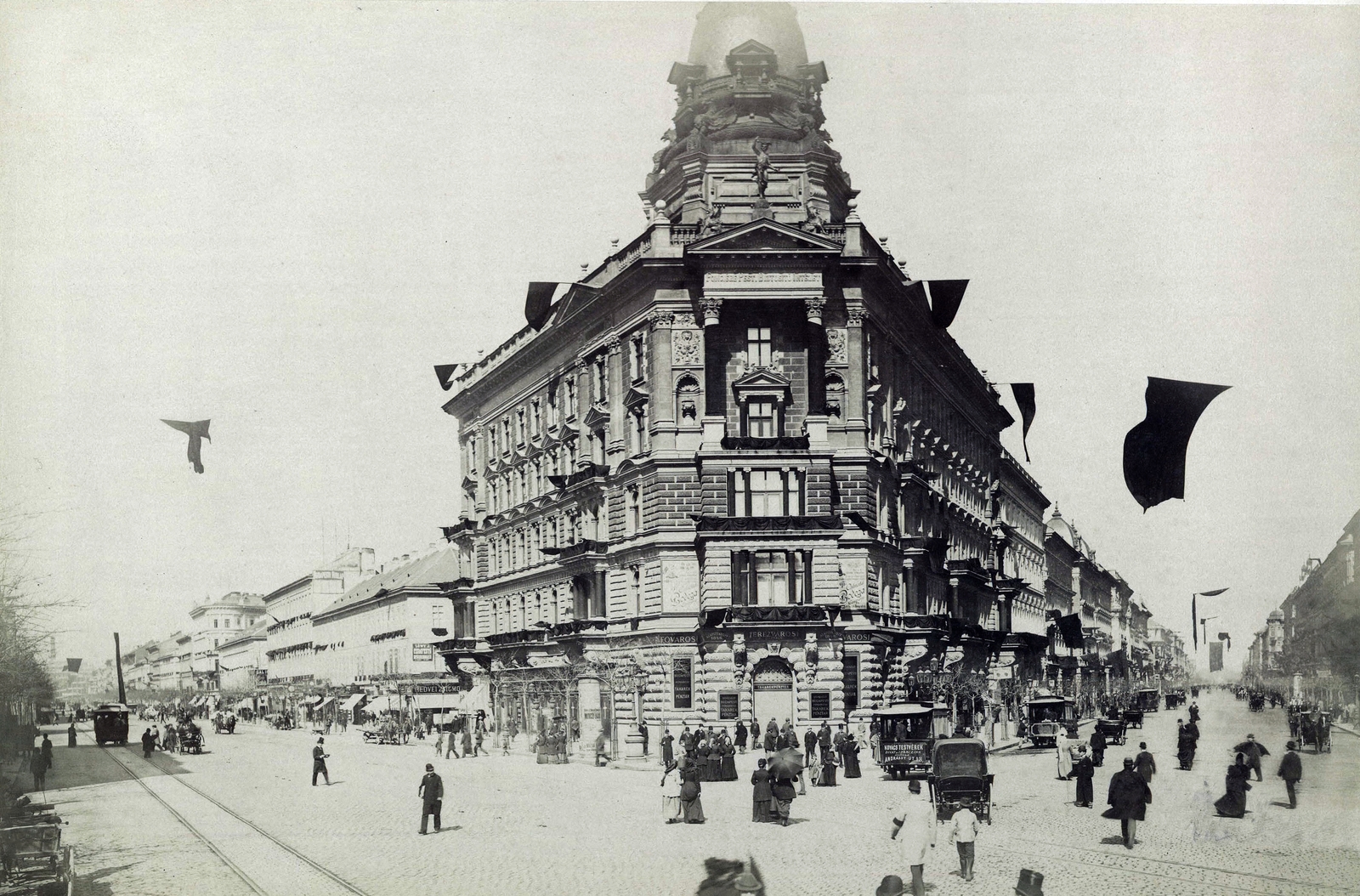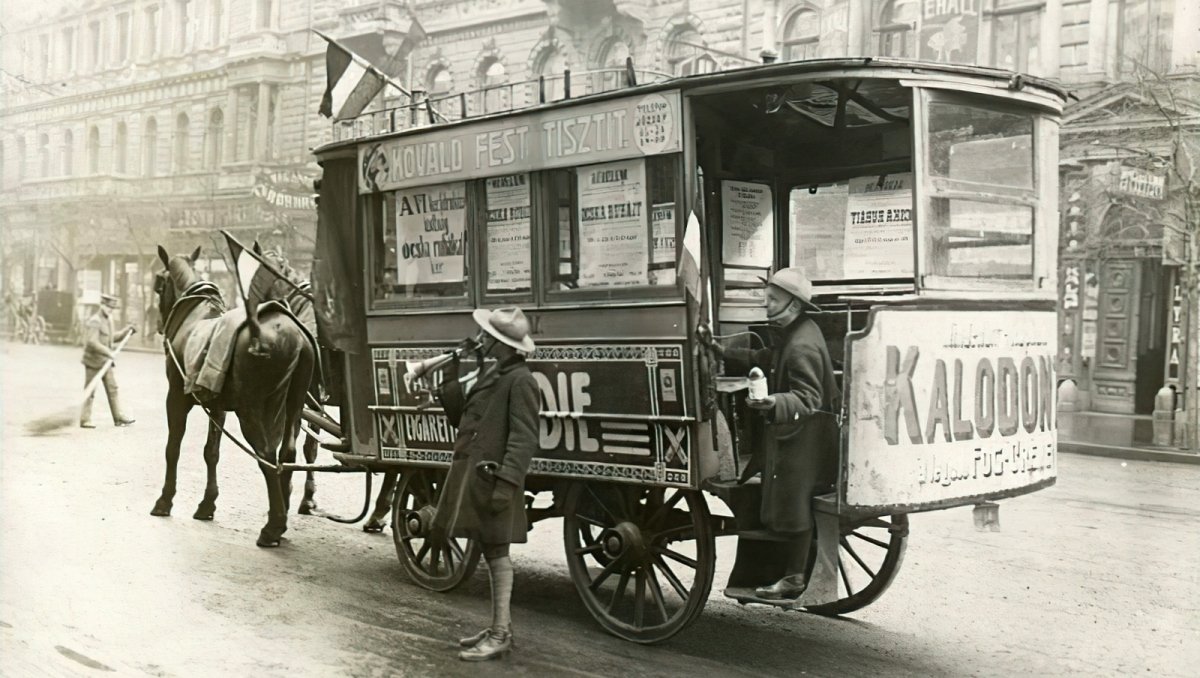Pest and Buda were not large cities at the beginning of the 19th century. If we take a look at the maps of the time, today's Inner Ring Road or Attila Road in Buda already ran in the suburbs, i.e., people could get from one end of the city to the other within a reasonable time on foot.
However, the city developed, and there was a need for some kind of organised public transport service to start, if not for everyday traffic, but certainly for tourist traffic. In this era, there could only be one type, the omnibus.

Omnibus in 1915 (Photo: Fortepan/Community Social Cooperative)
There was already a rental car running between Óbuda and Buda, but it was not yet an "omnibus". The first omnibus business was founded by János Kratochwill in Pest. In fact, there was no need to invent anything, since 1662 the horse drawn carriage had been operating in Paris. It differed from the rental car in that the former travelled according to a specific schedule, on a fixed route. Legally, it was also different from the rental car, so Kratochwill obtained the permission of the Board of Governors well in advance for the new type of service, because others had the exclusive license to operate the rental cars.
The business was not based on "commuters", since, on the one hand, no one actually lived too far from their workplace at the time. In addition, it was not very cheap, since a ticket cost 6-15 kreuzers, while a servant or day labourer received 20-30 kreuzers a day.
János Kratochwill settled in Pest from Moravia and originally operated two coffee houses, one in City Park, on the Páva Island, and one in the city centre, and when the lease of the coffee house on Páva Island was extended in 1832, he started the carriage service to revitalize traffic in his coffee houses. On 8 August 1832, the newspaper Jelenkor reported on the novel enterprise as follows:
"Among the measures of Budapest's new diligence, the new passenger carriages brought into vogue with the permission of the city council and now designed in a completely new form (they can be called "pajtás", "czimborás" or "mindenes" after the French omnibus) are noteworthy and worth mentioning. The Pest vehicles were János Kratochwill's, who owned the city's forest, the favourite place for walking and recreation of the local people. He started them for the purpose of transporting thrifty goods there for the multitude; hence starting from the first of July, every day and at every hour in front of the Kalmár association café, his carriages appear exactly at the station, and even if a guest misses them, they come and go properly, and thus make the trip, which might otherwise be expensive for many, easier and more pleasant; but as anyone can see, it also serves its purpose, because its carriages are comfortable, and the fare (6 kreuzers for one person) is so rewarding both way.”
The paper did not yet know the Hungarian equivalent of the Latin "omnibus" (meaning: for everyone), which had become established in France, but it made interesting suggestions, with the name "pajtás", "cimborás".

The omnibus running between Ős-Budavár and Krisztina Square arrives from Körönd, the picture was taken in front of 81 Andrássy Boulevard between 1896 and 1900 (Photo: FSZEK Budapest Collection)
The cars left every hour and travelled along Király Street, covering the nearly 3-kilometre journey in 20-25 minutes. The entrepreneur ordered a total of three vehicles for the start, and they differed from traditional rental cars, they were longer, the passengers sat sideways, and a tarpaulin was stretched over them, which could be lowered in case of bad weather. 8-14 people could travel on one of these vehicles at a time, which was pulled by two horses. In order to make the journey easier, the ticket can be redeemed in advance at ticket offices, so people did not have to pay the coachman.
The first omnibus started 190 years ago, on 1 July 1832. Kratochwill's business was successful, so much so that he wanted to expand it to Buda as well, but a legal dispute developed here with the rental car guild. The guild had the privilege of passenger transport, and it was disputed from the beginning whether Kratochwill, who was outside the guild, had legitimately received his permit for the Pest omnibuses. Of course, in the meantime, the coachmen who joined the rental car guild also organised their own omnibus business.

Traffic at the end of the 19th century. Omnibuses, horse railways and many pedestrians in the photo of György Klösz (Photo: Fortepan/Budapest Archives, Reference No.: HU.BFL.XV.19.d.1.04.018)
The legal dispute ended in 1835, when the Board of Governors ruled that the omnibus was a new type of business, and the privilege of the rental car guild did not apply to it. After the success of the first carriages, other enterprises were founded, on other lines, and in 1835 Kratochwill even bought a fourth carriage. The omnibus was therefore located in Pest and Buda, and the network was growing. It is interesting that János Kratochwill left the business in 1837 and sold his carriages.
Ferenc Toldy writes the following about travelling by omnibus his work Buda and Pest, 1800, 1833, 1850:
"Living in these beautiful places is made easier by the omnibuses, which are already in vogue here; on the other hand, the dust and this year's unbearable heat, which is cooled by not even the slightest shade on the entire long journey, make it unpleasant again."
Omnibuses were only the first swallows in public transport in Budapest, but they were part of the street scene for a very long time, for almost a hundred years, since the last omnibus service ceased in 1929, and the last horse-drawn carriage rolled down Villányi Road in Buda on 5 November 1929.
Cover photo: Omnibus in Budapest in 1916 (Photo: Fortepan/National Széchényi Library)




































Hozzászólások
Log in or register to comment!
Login Registration